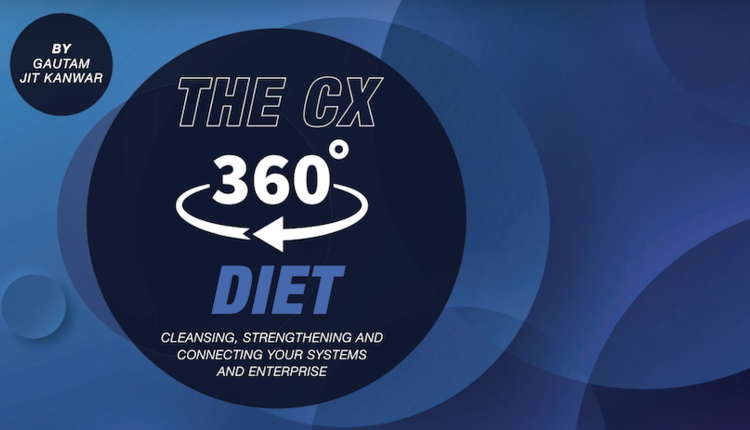
While it’s impossible to predict exactly what the post-COVID-19 world will look like, we can be fairly certain that business as we knew it over a year ago is not going to be the same. While organizations across many industries had been working on creating a more digitalized environment over the past several years, the pandemic gave a sudden and uncomfortable extra push to take another look at the timeline on those efforts. It was a wake-up call for the need for agility in how we communicate and do business with customers, as well as for what it means to be truly prepared for the unexpected. While many companies may have had some type of disaster recovery or business continuity plan in place, it probably didn’t include how to manage a pandemic — and it most certainly didn’t include how to adjust to the changes that would come because of it.
As we look toward and prepare for recovery, many organizations will experience a pent-up demand from customers after more than year of subdued spending—and with little time to prepare for it. Now is the time to reassess your customer communications management (CCM) processes to consider how your relationship with your customers may have changed over this past year. What are your customers telling you, either through direct interaction or through their behavior? What do you keep, what do you change and what should you let go? It is important to know if you should reorganize your business model and/or operations to better meet the current and future expectations of your customers, who also have experienced major shifts in their home and work lives.
As you are doing that assessment, here are five areas that are important to consider as we move into recovery:
1. The need to invest in speed. For many years, a bank customer could walk up to a branch reception desk, ask a question, then be referred to a teller, a loan officer or an investment counselor. Now, we can be fairly sure this will happen less frequently as fewer people will make the trip to the branch, preferring to check information via an app or to make a query via email, voice or video. Now is the time to assess the best way to provide customers with information about your products or services and how quickly that information can be presented—and to have the infrastructure in place to hasten the task of preparing and sending those customer communications. This most likely will involve moving from total dependency on IT to empowering business users to author and manage changing content. It is time to amp up your CCM systems accordingly.
2. Digital transformation is not an option. In 2010, the words digital transformation started to take form. Around 2017-2018, the concept picked up steam and companies started to pay attention and develop strategies for leveraging technology and data to create a digital transformation roadmap. However, COVID-19 brought the need for a digitalized environment front and center. In many cases, business functions that involved manual intervention came to a standstill. Gone was the ability to physically access documents from a file drawer for a signature. Gone was the ability to onboard new customers face-to-face with paper forms. For many businesses, producing and mailing customer communications from remote locations also became a huge challenge. Going forward, you will need to respond to all types of work environments with the ability to integrate channels like email and SMS with legacy mail or PDF communications to deliver the experience customers want.
3. Businesses of all sizes need to automate. The ability to fully automate the customer communication workflow is worth the time invested to create a process that does not need triage to keep running efficiently or human intervention to check for accuracy. Going forward, every business will need the right systems or support in place that allow for preparing and sending customer communications on-site or remotely with the scalability and proper security required. Take time to review your processes and procedures to find any common issues, address them and determine a way they can be automated for the future. If you don’t want to invest in automated capabilities internally, seek a way to outsource it to a trusted vendor. Identifying the processes and having a clear understanding of why the processes are in place and how to align them with your business objectives is the first step to having a streamlined workflow that provides faster delivery of your communications and lowers your costs.
4. Cross-training is a good idea. Another significant consideration is related to the pandemic itself. Many people have been lost to illness or simply to retirement. In times of what can be considered a cultural transition, members of your staff may decide to move on to start their own business, change professions or focus on what they regard as less stressful or more personally satisfying activities. Can they be replaced? Who else in your organization knows how your systems work and why they work? Consider cross-training your staff to be assured someone is in place to carry on if a critical member of your staff should leave.
5. Remote working is here to stay. It is important to design future processes with a distributed workforce in mind. With changed habits over the last year a good majority of employees are wanting to find work in non-metro areas, there is already a huge uptick in job openings with a “Permanently Remote Work” tag. This means you may have a very small (and probably expensive) pool of candidates agreeing to work 100% on site if it is an absolute must. Rethinking how to find and use the talent you need to operate efficiently may require some thinking outside the box.
We all experienced difficult and disruptive times over the last year with no guarantee exactly when things will return to normal or even what normal may look like months from now. However, we all have a role in creating a positive future by building on our proven strengths and taking a careful look at new possibilities. A quote that inspires me is, “If not now, when?” If we have learned one thing, we may not know when the next surprise is around the corner, but now we do know for sure it is wise to prepare.




















